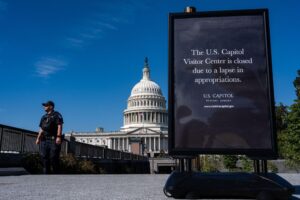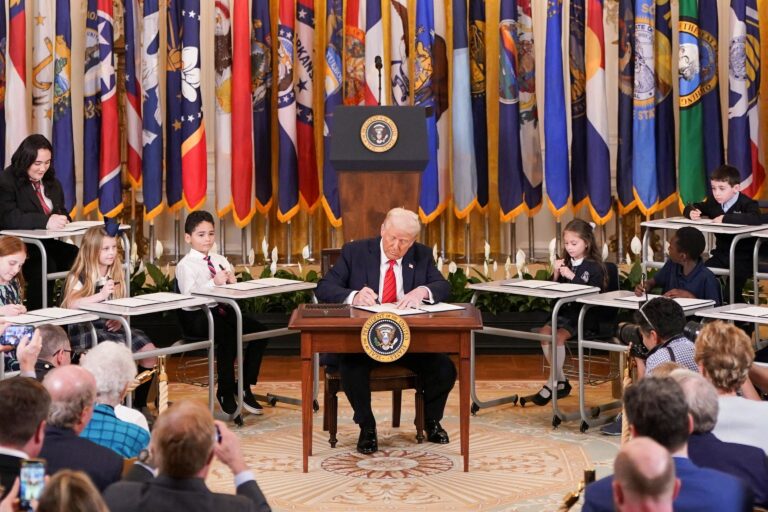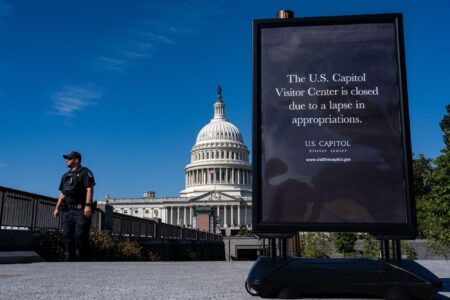Federal Education Budget Cuts: An Overview of the Trump Administration’s Proposal
The Trump administration has introduced a substantial proposal aimed at decreasing federal funding for the U.S. Department of Education, marking a pivotal change in national education policy. This initiative is part of a broader agenda to reduce federal expenditures and shift greater responsibility for education to state and local governments. While proponents argue that this approach enhances fiscal discipline and local autonomy, critics caution that it risks undermining critical educational programs and widening disparities across the country.
The budget blueprint outlines several key reductions, including:
- Cutbacks in grants directed toward underprivileged school districts
- Lower allocations for federal student loan and grant programs
- Significant decreases in funding for educational research and innovation
- Possible dissolution of certain Department of Education offices responsible for regulatory oversight
| Education Sector | Proposed Funding Change | Projected Savings |
|---|---|---|
| K-12 Grants | -15% | $500 million |
| Student Aid Programs | -10% | $300 million |
| Research & Development | -25% | $150 million |
Consequences for Federal Education Initiatives and Student Support Systems
The proposed budget reductions threaten to disrupt numerous federal education programs that many schools rely on, particularly those serving vulnerable populations. Title I funding, which supports schools with high numbers of low-income students, could see a 25% cut, potentially diminishing academic assistance and extracurricular opportunities. Programs supporting special education, bilingual instruction, and early childhood education are also at risk, potentially exacerbating educational inequities.
Student support services, including mental health counseling, college preparation, and career guidance, may face significant funding shortfalls. These services are vital for at-risk students, including those from economically disadvantaged backgrounds and students with disabilities, who may experience reduced access to essential resources.
- Decreased availability of targeted academic interventions for students facing challenges
- Potential job losses among educators and support personnel
- Reduction or elimination of after-school and enrichment programs
- Cutbacks in counseling and mental health support
| Program | Current Budget | Proposed Cut | Expected Impact |
|---|---|---|---|
| Title I Grants | $15 billion | 25% | Reduced resources for disadvantaged students |
| Special Education | $12 billion | 20% | Less support for students with disabilities |
| Student Counseling | $2 billion | 30% | Fewer mental health services available |
| Early Childhood Education | $5 billion | 15% | Limited program access for young learners |
Analyzing the Impact on Public Schools and Postsecondary Education
Education experts warn that these funding cuts could severely disrupt the financial foundations of public schools and colleges. Public K-12 institutions may struggle to sustain programs for special education, extracurricular activities, and standardized testing support, all of which often depend on federal grants. The potential reduction in resources could disproportionately affect schools serving low-income and minority students.
For higher education, the consequences are multifaceted:
- Decreased availability of Pell Grants and federal student loans, limiting college affordability for economically disadvantaged students.
- Reduced funding for academic research, hindering innovation and scholarly advancement.
- Relaxation of regulatory oversight, which may impact campus safety and civil rights enforcement.
| Category | Public Schools | Higher Education |
|---|---|---|
| Primary Funding Sources | Federal Grants, Title I | Pell Grants, Research Funding |
| Main Risks | Program Reductions, Staff Layoffs | Access Barriers, Decline in Quality |
| Community Impact | Disadvantaged Student Populations | Lower Enrollment Among Low-Income Students |
Policy Recommendations to Alleviate Educational Funding Challenges
To minimize the adverse effects of federal budget reductions on education, policymakers should focus on strategic investments that enhance resilience and equity. Prioritizing digital infrastructure improvements is critical to bridging the digital divide, especially in rural and underserved areas, ensuring all students have access to quality remote learning opportunities. Additionally, bolstering professional development for educators will help maintain high teaching standards amid changing conditions.
- Expand high-speed internet access in marginalized and rural communities.
- Increase funding for school-based mental health programs to address ongoing pandemic-related challenges.
- Foster collaborations between public institutions and private organizations to share resources and expertise.
- Adopt flexible funding mechanisms that allow rapid allocation of resources to emerging educational priorities.
Moreover, establishing transparent monitoring systems is essential to evaluate the impact of budget cuts and the effectiveness of mitigation efforts. Data-driven policy adjustments will be crucial to safeguarding vulnerable student groups and ensuring equitable educational outcomes. The table below summarizes key focus areas for legislative attention:
| Focus Area | Primary Goal | Expected Outcome |
|---|---|---|
| Digital Equity | Enhance technology infrastructure | Sustained learning access |
| Teacher Development | Provide ongoing training and support | Improved instructional effectiveness |
| Mental Health Services | Expand counseling and wellness programs | Enhanced student well-being |
Conclusion: Navigating the Future of Federal Education Funding
As the Trump administration advances its plan to curtail funding for the Department of Education, the education sector faces a period of uncertainty and adjustment. Stakeholders from educators to policymakers are closely monitoring how these fiscal changes will influence schools, colleges, and students across the nation. Ongoing updates and official communications will be critical in clarifying the administration’s goals and the broader implications of this significant policy shift.







